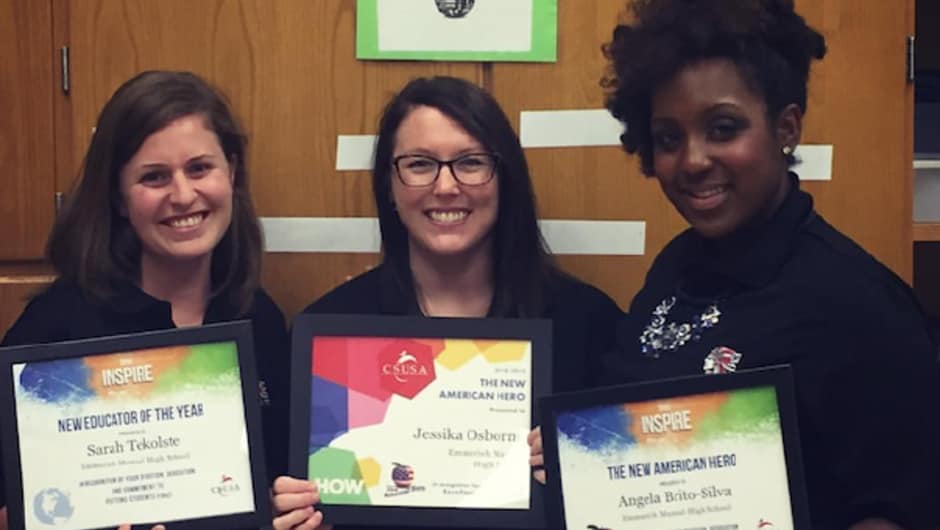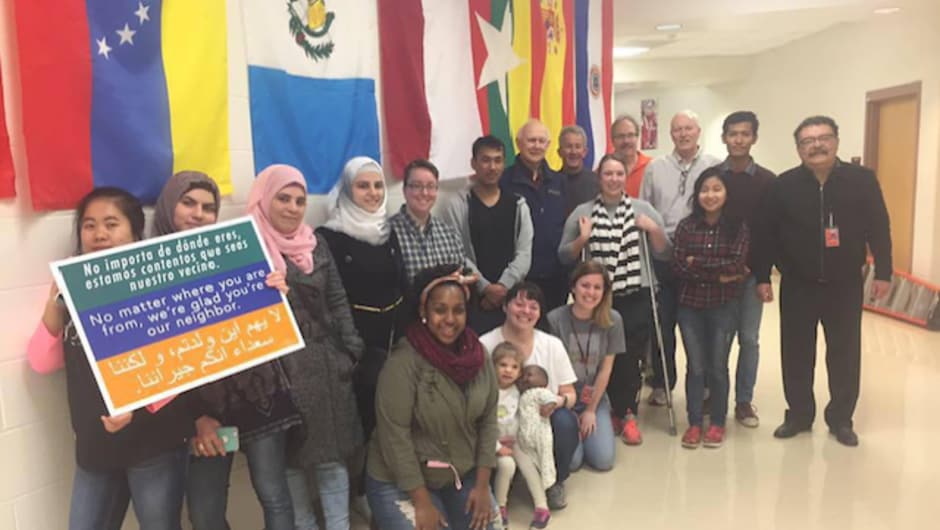'I Fully Embrace Myself As An Afro-Latina, And TFA Played A Huge Role'

What was your childhood experience like?
I’m from the Dominican Republic. My parents left their professional jobs (mom was an emergency room nurse, father was a private school educator), beautiful home, and family to move to the US so that their kids could have a better education. l was 4 and my brother 2 when we arrived in the Bronx, New York. Six months later, we moved to Cincinnati, Ohio where my parents took their first real American jobs as housekeepers at a hotel and where I started my K—12 education.

What were your most vivid memories of being Latina at school?
I attended a lot of different schools, all of which had dramatically different demographics — but I was always the minority, as a Latina. Growing up, my chocolate skin and thick hair allowed me to look like my Black peers even though I was not culturally African American; my perfect, “accentless” English allowed me to sound like my white peers even though I wasn’t white; and though I spoke Spanish, danced Hispanic music, ate Hispanic food, l was too dark for most people to embrace the fact that l was Latina.
As a Dominican in Cincinnati, Ohio, I did the Soulja Boy at school homecoming dances, danced bachata at my friends’ quinceafieras and sung N’sync songs as I washed the dishes and watched MTV. All through school, I navigated these groups fluidly yet never felt like a full member of any of them. Though they each embraced an important component of who I was, none of them fully welcomed the complexity of my cultural identity.
“Through my experiences in the corps and as an alumna of TFA...I was able to fully embrace myself not as a Black woman or an immigrant or a Latina, but in the fullness of my complex identity as Angie, an Afro-Latina, second generation Hispanic American.”
What role did cultural identity play in your decision to join TFA?
It played a huge role, especially because I desired to help others celebrate the complexities of their cultural identities as l was learning to love and embrace mine; in every facet.
In college, I took an education class where we talked about ‘at—risk youth.’ I remember vividly a page in our textbook that listed factors of at—risk students.
As a camp counselor, working with at—risk youth prompted my desire to become an educator but as I began to read, the descriptions sounded a lot less like my campers and a lot more like me.
American youth are considered at—risk if they:
-
Are a child of an immigrant
-
Don't speak English at home
-
Grew up in a low-income neighborhood
-
' ...etc.
l was shocked to find that I met more than seven of the factors. Even though I spoke English fluidly, was in the gifted program at school, and attended college, I was included the same ‘at—risk‘ category as some of my K-12 peers who underperformed. That experience reminded me of my junior and senior years in high school in a low-income neighborhood, where my counselor gave me numerous resources to sign up for the SAT and ACT, learn how to fill out scholarship applications, attend college visits, and more. I thought everyone was getting these resources until I talked to my friends of similar backgrounds who weren’t in the gifted program — who had never received this material.
The culmination of those experiences made me decide to teach in an urban setting so that I could give “at—risk” students like me the opportunities and resources that they may otherwise not receive because their ‘at—risk’ status implied being treated differently.
What did TFA provide for helping shape your cultural identity?
TFA and the relationships established within my corps provided a lot of opportunities for me to discuss and explore my cultural identity. One opportunity that stands out were affinity groups based off different facets of identity, like faith, race/ethnicity, etc. l was able to connect with other corps members with similar cultural and socio-economic backgrounds and discuss how those experiences shaped the way our students responded to us. I remember a student who said to me: “Ms. Brito, we thought you were a sub because we never saw a black person teach Spanish before.” My affinity groups gave me a space to share about that experience, and many others. It was encouraging to know that other corps members were having similar experiences and to learn and grow together.
My corps experience allowed for me to feel fully part of a community that I’d previously felt a stranger to. This occurred as my Hispanic students who looked nothing like me, spoke different Spanish dialects, and had very different cultural experiences, warmed up to me, asked for help on homework, and came to me with problems, just because I also identified as Hispanic/Latinx.
Through my experiences in the corps and as an alumna of TFA, among personal identity discovery, l was able to fully embrace myself not as a Black woman or an immigrant or a Latina, but in the fullness of my complex identity as Angie, an Afro-Latina, second generation Hispanic American.

What is a misperception about being Hispanic/Latinx, and what advice do you have for those who are unconfident about their Hispanic/Latinx cultural roots?
In Institute, I became friends with a guy named Gabe, who also identified as Latino. I remember learning that Gabe couldn't speak Spanish. Growing up in a home where we had to speak Spanish, l was baffled about his inability to engage with me in Spanish. I would give him such a hard time and often ask, “Gabe, how can you be Latino and not speak Spanish?!" Then, I learned that he was El Salvadorian and Guyanese, and having been raised in both cultures, he too was navigating his cultural identity. Language was part of that journey, and English was a language that allowed him to be culturally connected to both sides of his family.
After teaching for five years, I can embrace the fact that though I was born in Dominican Republic and raised in a Dominican home, my Spanish is now seasoned with Honduran, Nicaraguan and Mexican slang, a Puerto Rican accent, and vocabulary that is completely foreign to my Dominican family because of what I’m exposed to in my school and community. My family pokes fun of me for that, but that doesn’t make me any less Latina.
The misconception is that we are not Hispanic/Latinx “enough” if we don’t speak Spanish, prefer Hispanic/Latinx cuisine, listen to a certain type of music, or dance a certain type of way. For those of you struggling with your roots, know that you are Latino because of who you are and where you are from! Having similar roots doesn’t mean we have to have similar fruits. The way you choose to manifest your roots is up to you.
“Having similar roots doesn’t mean we have to have similar fruits. The way you choose to manifest your roots is up to you.”
-- As told to Cece Zhou.


